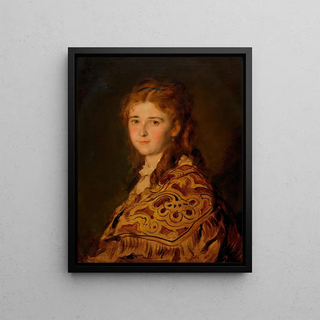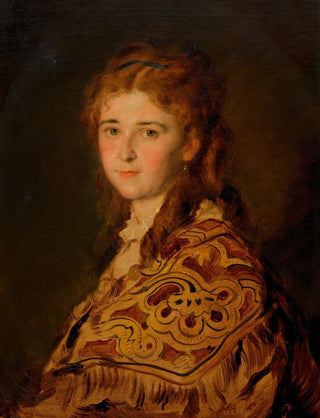Art print | Young woman with a Turkish scarf - Hans Canon


View from behind

Frame (optional)
The canvas "Young Woman with a Turkish Scarf" by Hans Canon is a work that evokes not only beauty but also the cultural richness of its time. This painting, created at the end of the 19th century, is part of an artistic movement where Orientalism plays a prominent role in the Western imagination. The artist, through this depiction, immerses us in a delicate and refined universe, where every detail seems to tell a story. The young woman, dressed in a Turkish scarf, embodies both exoticism and grace, capturing the viewer's attention at first glance. This artwork is not limited to a simple representation but becomes a true dialogue between the artist and the world, an invitation to explore distant horizons.
Style and uniqueness of the work
Hans Canon's style is distinguished by finesse in the treatment of colors and textures. In "Young Woman with a Turkish Scarf," the palette is subtly chosen, blending warm tones and delicate shades that highlight the young woman's skin and the fabric of her scarf. The artist masters the art of chiaroscuro, creating contrasts that enhance the depth of the gaze and the softness of the features. The composition is carefully balanced, each element placed to reinforce the harmony of the whole. This artwork does not merely depict a female figure; it transcends a simple image to become a piece of art that invites contemplation, evoking emotions and reflections on beauty and identity.
The artist and his influence
Hans Canon, an Austrian-born painter, established himself in the art world thanks to his talent and unique vision. Influenced by the artistic currents of his time, he incorporated elements of Orientalism into his works, reflecting a fascination with distant cultures. His work is marked by a constant search for beauty and harmony, which allowed him to make a name for himself in the artistic community. Canon was also a talented portraitist, capturing the essence of his models with remarkable precision. His ability to combine realism and poetry makes him

Matte finish

View from behind

Frame (optional)
The canvas "Young Woman with a Turkish Scarf" by Hans Canon is a work that evokes not only beauty but also the cultural richness of its time. This painting, created at the end of the 19th century, is part of an artistic movement where Orientalism plays a prominent role in the Western imagination. The artist, through this depiction, immerses us in a delicate and refined universe, where every detail seems to tell a story. The young woman, dressed in a Turkish scarf, embodies both exoticism and grace, capturing the viewer's attention at first glance. This artwork is not limited to a simple representation but becomes a true dialogue between the artist and the world, an invitation to explore distant horizons.
Style and uniqueness of the work
Hans Canon's style is distinguished by finesse in the treatment of colors and textures. In "Young Woman with a Turkish Scarf," the palette is subtly chosen, blending warm tones and delicate shades that highlight the young woman's skin and the fabric of her scarf. The artist masters the art of chiaroscuro, creating contrasts that enhance the depth of the gaze and the softness of the features. The composition is carefully balanced, each element placed to reinforce the harmony of the whole. This artwork does not merely depict a female figure; it transcends a simple image to become a piece of art that invites contemplation, evoking emotions and reflections on beauty and identity.
The artist and his influence
Hans Canon, an Austrian-born painter, established himself in the art world thanks to his talent and unique vision. Influenced by the artistic currents of his time, he incorporated elements of Orientalism into his works, reflecting a fascination with distant cultures. His work is marked by a constant search for beauty and harmony, which allowed him to make a name for himself in the artistic community. Canon was also a talented portraitist, capturing the essence of his models with remarkable precision. His ability to combine realism and poetry makes him






